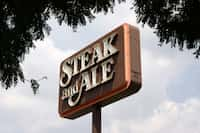Oh, Germany, the motherland of beer. People travel from all over the globe to enjoy Oktoberfest, and the rich brewing traditions of the country's approximately 1,300 breweries. Beer isn't just about partying in Germany; it's a big part of the culture, history, even the law.
Das Reinheitsgebot, also known as the German beer purity law, has reigned for 500 years. It permits only four ingredients -- barley, hops, yeast and water -- to be used when brewing beer.
On April 23, 1516, Duke William IX worried that beers were being mixed with plants that might be poisonous, ash, and sawdust, and in an effort to regulate everyone's favorite beverage das Reinheitsgebot came to be. The law not only regulated ingredients, but also pricing, which limited profits for innkeepers and guaranteed taxes. In 1907, it became imperial law.
Back in the day, brewers didn't know yeast was what was turning their sweet tea into beer, since it was wild yeast in the air causing fermentation. It wasn't until 1993 that yeast was included in the ingredients list, so the Reinheitsgebot pre-dates knowledge that yeast makes beer. Governments, amirite?
To this day, beer purity law influences all the beer sold in Germany, creating a culture of very crisp, clean beer styles. While limited to only four ingredients, those with the brewing know-how can create tons of flavor profiles. This is a huge selling point for traditional brewers globally, and as consumers around the world get more interested in being healthy and organic, beers with so few ingredients are very appealing.
"In contrast to our colleagues abroad, German brewers don't use artificial flavours, enzymes or preservatives," said Hans-Georg Eils, president of the German Brewers' Federation, at the Green Week agricultural fair in Berlin.
However, not everyone is happy with the limits imposed. Some brewers want to be more creative and use other grains such as wheat and rye, as well as other things that add different flavors to the beers, such as cherries, honey, or spices. They can do that, but those who take the plunge must label their product as “mixed beer beverages” under the current laws.
The consumer palate in the UK is different from that in the U.S., so while American brewers are experimenting with ingredients, German brewers are chomping at the bit to have the reins loosened. They believe using other local ingredients can only add to the beers, not take away.
Foreign imports to Germany were banned until 1993, so some consumers think the limits constrict what beers are available. Imports into the country only made up 8 percent of the German beer market in 2012, according to the Washington Post. Younger consumers want more variety, and surveys increasingly show less approval for the Reinheitsgebot. Overall consumption of beer in Germany has steadily been declining since the 1970s, and many think the constrictive rules are part of the reason. Germans drank the equivalent of half a liter a day in 1976, but only around a third of a liter in 2012.
Regardless of your level of approval, on April 23, raise a glass of your favorite German lager... or the craziest craft brew you can find. Drinker’s choice!
Booze News Insider Mae Rock is a craft beer enthusiast, and local brewery groupie.






